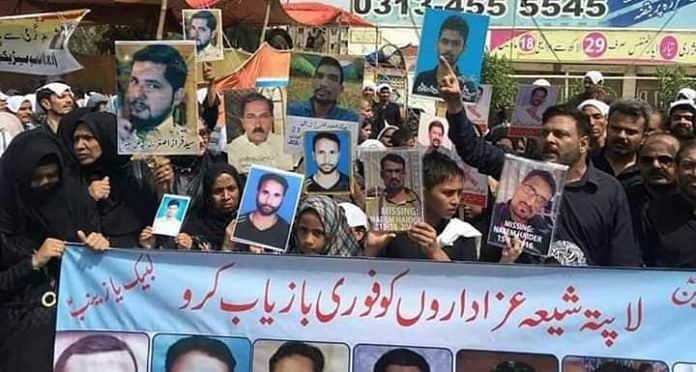New Delhi: The blast at a Shia mosque in Pakistan’s Peshawar Friday — which left at least 30 people dead and over 50 injured — is hardly the first time that this minority Muslim community has suffered terrorist or sectarian violence in the country. The majority of Muslims in Pakistan are Sunnis.
Activists such as Abdul Nishapuri have spent an extended period of time attempting to document the pattern of violence against Shias in Pakistan.
At the Wadi-e-Hussain graveyard in Pakistan’s Karachi, red flags mark the graves of Shias who have been victims of alleged targeted attacks. According to the South Asia Terrorism Portal, nearly 2,700 Shias were killed in Pakistan between 2001 and June 2018.
Also read: This is the Shia sect that has faced endless persecution in Pakistan & Afghanistan
Therhi Massacre (1963)
On 3 June 1963, in the small town of Therhi in Sindh’s Khairpur district, a mob reportedly comprising “radical Deobandis and Wahhabis” allegedly killed 118 Shia Muslims, including children.
According to an article on the “alternative media” site Let Us Build Pakistan, founded by Nishapuri, the mob allegedly carried out the killings using meat cleavers and machetes as weapons, and planned to burn the bodies in an empty well, before police intervened.
Shia residents of Khairpur district continue to perform public mourning in memory of the victims of the attack every year, Shiite.news reported in 2019.
Gilgit Massacre (1988)
Between 16 and 18 May 1988, the disputed region of Gilgit-Baltistan reportedly witnessed its first anti-Shia attack.
According to the Herald magazine of the Dawn newspaper, anti-Shia riots broke out in the region due to disputes between Sunnis and Shias over the Ramzan moon sighting.
“When Shias in Gilgit celebrated Eidul Fitr, a group of extremist Sunnis, still fasting because their religious leaders had not announced the sighting of the moon, attacked them. This led to violent clashes between the two sects,” the Herald report claimed. “In 1988, after a brief calm of nearly four days, the military regime allegedly used certain militants along with local Sunnis to ‘teach a lesson’ to Shias, which led to hundreds of Shias and Sunnis being killed.”
Quetta mosque bombing (2003)
On 4 July 2003, 53 people belonging to the Persian-speaking Hazara community (who are primarily Shia by faith) lost their lives in a bomb blast at a Shia mosque in Balochistan capital Quetta.
Pakistan authorities detained 19 people as suspects and the then PM Zafarullah Khan Jamali blamed “foreign hands” for the attack, The Guardian had reported.
Terrorist group Lashkar-e-Jhangvi (LeJ) was allegedly responsible for the attack, said to be the first of nearly two decades of continuing violence against Hazaras, according to a report by Human Rights Watch.
Kohistan massacre (2012)
On 28 February, 2012, 18 Shias from Gilgit were killed in a bus attack by alleged terrorists in the neighbouring Kohistan in Pakistan’s Khyber-Pakhtunkhwa province.
The perpetrators who ambushed the Rawalpindi-bound bus reportedly used military uniforms as disguises and were alleged to be members of Jundallah, a terrorist group associated with the Tehreek-e-Taliban Pakistan (TTP).
The attack sparked nationwide protests by Shia Muslims. The authorities attempted to quell the demonstrations with shutdowns and curfews.
Shikarpur bombing and Karachi bus attack (2015)
On 30 January 2015, alleged Jundallah terrorists targeted a Shia mosque in Sindh’s Shikarpur district, killing over 60 people in the bombing.
“The explosion occurred just after Friday prayers. A number of victims were trapped under debris after the roof of the imambargah collapsed due to the intensity of the blast,” Dawn had reported.
Four months later, terrorists reportedly killed 47 Shia civilians aboard a bus in Karachi and left behind an ISIS pamphlet claiming responsibility for the attack.
(Edited by Poulomi Banerjee)
Also read: Why Hazaras in Pakistan have been victims of sectarianism & ethnic conflict



